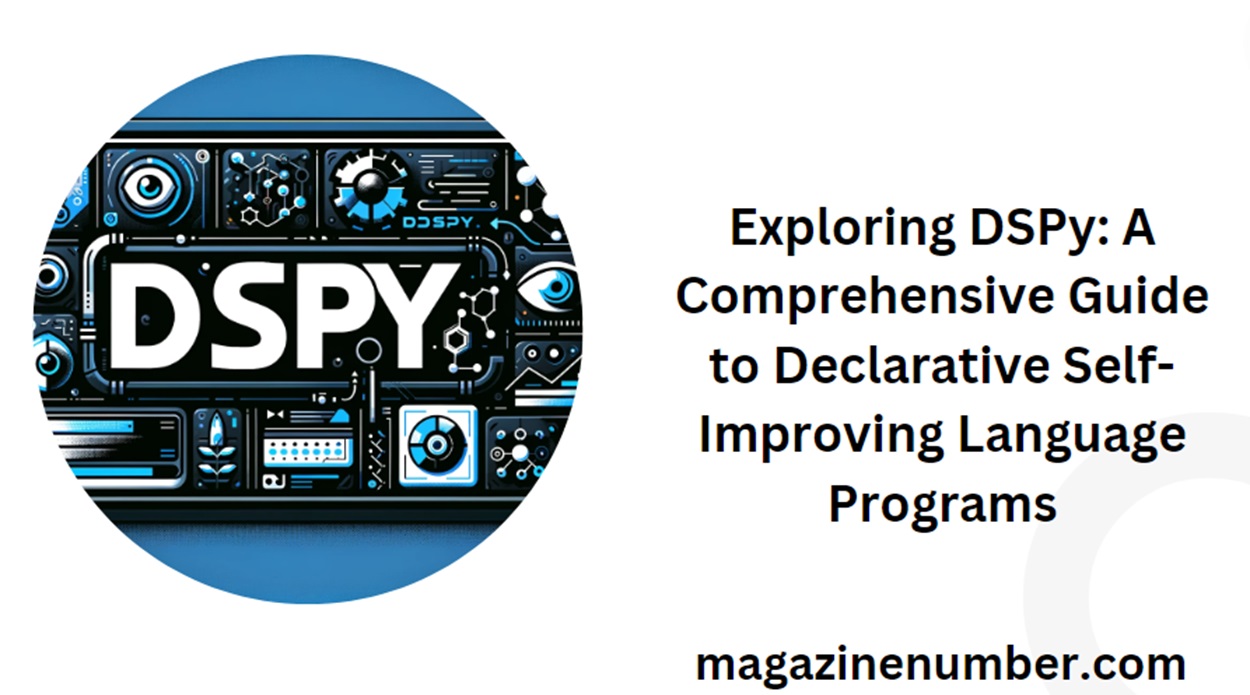In the rapidly evolving world of artificial intelligence and machine learning, the ability to build, optimize, and evaluate complex systems efficiently is crucial. DSPy, a framework for declarative self-improving language programs, offers a powerful solution to these challenges. This article delves into the intricacies of DSPy, exploring its features, benefits, and practical applications.
Table of Contents
What is DSPy?
DSPy stands for Declarative Self-improving Language Programs, implemented Pythonically. It is designed to provide a systematic approach to programming with language models (LMs), moving away from the traditional prompt engineering methods that are often complex and error-prone. By using DSPy, developers can create, optimize, and evaluate AI systems more effectively, making it easier to leverage the power of large language models like GPT-3, GPT-4, T5-base, and Llama2-13b.
The Philosophy Behind DSPy
DSPy aims to simplify the development of AI systems by separating the flow of the program (modules) from the parameters (LM prompts and weights) of each step. This separation allows for a more structured and maintainable approach to building AI applications. DSPy’s optimizers can tune prompts and weights based on defined metrics, ensuring high-quality outputs and more reliable performance.
Key Features of DSPy
Declarative Programming
One of the core features of DSPy is its declarative programming model. This approach allows developers to define tasks and build pipelines using predefined modules. By abstracting the complexity of prompt engineering, DSPy makes it easier to construct robust AI systems.
Self-Improving Prompts
DSPy includes a range of optimizers that automatically generate and refine instructions, few-shot examples, and adjust LM weights based on specified metrics. This capability ensures that the prompts are continuously improved, leading to better performance over time.
Modular Approach
The modular architecture of DSPy enables developers to build their systems using predefined components. This modularity not only simplifies the development process but also enhances the maintainability and scalability of the AI systems.
Cross-LM Compatibility
DSPy is designed to work with a variety of large language models, including GPT-3, GPT-4, T5-base, and Llama2-13b. This flexibility allows developers to choose the most suitable model for their specific needs and seamlessly integrate it into their DSPy programs.
Getting Started with DSPy
Installation
Installing DSPy is straightforward. The framework can be installed using pip, a package manager for Python. To install DSPy, you can run the following command:
pip install dspy-aiFor additional integrations, such as Pinecone or ChromaDB, you can use:
pip install "dspy-ai[extra]"Building Your First DSPy Program
Define Your Pipeline
The first step in building a DSPy program is to define what the program should do. This involves specifying the tasks and the modules needed to accomplish them. For example, you might start with a simple chain-of-thought step and then incrementally add complexity as needed.
Explore Examples
Once you have defined your pipeline, it’s important to explore a few examples of the task you’re trying to solve. Running these examples through your pipeline will help you understand its performance and identify areas for improvement.
Define Your Data and Metrics
Formalizing your training and validation data is crucial for DSPy evaluation and optimization. Additionally, you need to establish metrics that will be used to evaluate the performance of your system. These metrics could be accuracy, exact match, F1 score, or other relevant measures.
Optimization
With your pipeline, data, and metrics in place, you can use DSPy’s optimizers to refine your program. DSPy includes various optimizers, such as BootstrapFewShot and MIPRO, which help generate effective prompts and update LM weights based on your data and metrics.
Evaluation
Continuously evaluating your pipeline is essential to ensure it meets the desired accuracy and reliability. By iterating on your program and leveraging DSPy’s optimizers, you can achieve high-quality outputs that meet your specific requirements.
Practical Applications of DSPy
Question Answering Systems
DSPy can be used to build sophisticated question-answering systems. By leveraging its modular architecture and self-improving prompts, developers can create systems that provide accurate and contextually relevant answers. For example, you can use DSPy to construct a retrieval-augmented generation (RAG) system that retrieves relevant passages and generates answers based on them.
Text Summarization
Text summarization is another area where DSPy excels. By defining a pipeline that includes modules for extracting key information and generating concise summaries, developers can create powerful summarization tools. DSPy’s optimizers can further enhance the quality of the summaries by refining the prompts and adjusting LM weights.
Code Generation
DSPy is also well-suited for code generation tasks. By using predefined modules and optimizers, developers can create systems that generate high-quality code snippets based on natural language descriptions. This capability is particularly useful for automating repetitive coding tasks and improving developer productivity.
Custom NLP Tasks
In addition to the above applications, DSPy can be used for a wide range of custom NLP tasks. Whether it’s sentiment analysis, named entity recognition, or machine translation, DSPy’s flexible and scalable framework makes it an ideal choice for building and optimizing NLP systems.
Advanced Features of DSPy
Fine-Tuning Language Models
One of the advanced features of DSPy is its ability to fine-tune language models. By distilling a prompt-based DSPy program into weight updates, developers can enhance the efficiency and performance of smaller LMs. This feature is particularly useful for applications that require high performance but have limited computational resources.
Bayesian Optimization
DSPy’s MIPRO optimizer uses Bayesian Optimization to search for the best generation instructions and demonstrations across modules. This data-aware and demonstration-aware optimization technique ensures that the prompts are highly effective and tailored to the specific task.
Integration with Local Models
DSPy supports integration with local models, allowing developers to use their preferred language models without relying on external APIs. This capability provides greater flexibility and control over the AI systems, enabling customization and optimization to suit specific requirements.
Best Practices for Using DSPy
Start Simple
When building a DSPy program, it’s important to start simple and incrementally add complexity. By beginning with a basic chain-of-thought module and gradually introducing additional components, developers can ensure a more manageable and effective development process.
Collect and Use Examples
Collecting and using examples is crucial for optimizing your DSPy program. By running examples through your pipeline and analyzing the outputs, you can identify areas for improvement and refine your prompts and weights accordingly.
Define Clear Metrics
Having clear and well-defined metrics is essential for evaluating the performance of your DSPy program. These metrics should align with the specific goals of your application and provide a quantifiable measure of success.
Continuous Evaluation and Optimization
Continuous evaluation and optimization are key to maintaining the quality and reliability of your DSPy program. By regularly assessing the performance of your pipeline and using DSPy’s optimizers, you can ensure that your system remains effective and up-to-date.
Challenges and Future Directions
Performance Variability
One of the challenges with DSPy is performance variability across different language models. While DSPy provides tools to optimize prompts and weights, the effectiveness can still vary depending on the underlying model and the specific task.
Computational Resources
Building and optimizing complex AI systems with DSPy can require substantial computational resources. Ensuring that you have sufficient RAM and, if possible, a GPU can significantly improve the efficiency and performance of your DSPy programs.
Community and Documentation
As a relatively new framework, DSPy is still developing its community and documentation. While there are growing resources and examples available, staying up-to-date with the latest developments and participating in community discussions can help mitigate any challenges you encounter.
Conclusion
DSPy offers a powerful and systematic approach to building, optimizing, and evaluating AI systems. By leveraging declarative programming, self-improving prompts, and a modular architecture, DSPy simplifies the development process and enhances the performance of large language models. Whether you’re working on question answering, text summarization, code generation, or custom NLP tasks, DSPy provides the tools and flexibility needed to achieve high-quality results. As the framework continues to evolve, it promises to play a significant role in the future of AI development.
Read our blogs at Magazine Number.



